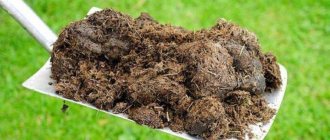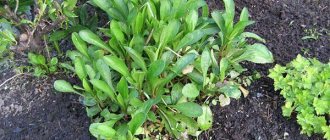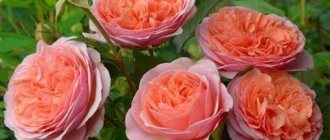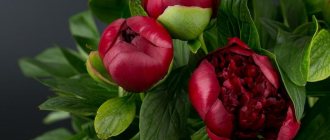What can you say about Pioneer sunflowers? First of all, we note that Pioneer is the name of an American company that supplies the market with new varieties of agricultural crops, including sunflowers. The company has been operating since 1926. During this time, its specialists have created several varieties of oilseed crops, which have both common features and some differences.
As you know, sunflower is mainly grown to produce oil; this quality of varieties and hybrids was given special attention during breeding. As a result, biologists were able to develop varieties with a high oil content, which can reach 50-60%.
In addition, breeders tried to select plants with well-developed parameters for yield, resistance to diseases, drought and other unfavorable climate conditions.
In terms of ripening time, varieties of the Pioneer variety can be early ripening, ripening in 80-90 days; early, ripening in 100-115 days; average, their ripening period lasts up to 125 days. Early-ripening varieties have a yield of up to 30 centners per hectare, mid-ripening ones can produce up to 40 centners per hectare.
Pioneer sunflower varieties and hybrids are known all over the world; in Russia they have taken root due to their good adaptation to the Russian continental climate and undemanding soil conditions. All of them give a good harvest with minimal costs for care and cultivation.
Experts say that the highest yield of Pioneer sunflower hybrids can be achieved by changing the density of crops. Thus, in dry areas with little rainfall, it is recommended to sow up to 50 thousand seeds per 1 hectare of area. In areas with sufficient rainfall and moisture, the density can be increased to 55-58 thousand per hectare.
Pioneer PR64A83
The most popular hybrid in Russia is the Pioneer PR64A83. Farmers prefer it for its stable, high yield, resistance to lodging, disease and drought. The stem of the plants is quite high - up to 170 cm, the root is strong, taproot, the basket with fruits is about 20 cm in diameter. In terms of ripening time, the hybrid is mid-season, the harvest can be harvested 3.5-4 months after sowing, but fully ripened seeds hold tightly in in their nests without crumbling. The seeds are large, dense, black, and contain about 49-50% oil. 1 thousand grains weighs 60 grams.
Pioneer PR62A91RA29
Hybrid Pioneer PR62A91RA29 is not large in size; the height of the stem ranges from 110 to 160 cm, depending on climatic conditions. The diameter of the fruit basket is 19-23 cm. This variety is considered early ripening, the harvest is harvested 2.5-3 months after sowing. In areas with a warm climate, this allows you to harvest 2 crops per season, and in short summer conditions, the crops have time to ripen well before the arrival of cold weather. In addition, the hybrid has excellent resistance to drought and lodging. Large seeds contain up to 52% oil.
Syngenta, Pioneer, Limagrain - whose seed is better?
In the modern market, companies such as Limagrain, Pioneer, and Syngenta are especially popular among agricultural producers and amateur gardeners. Each company produces its own sunflower seed hybrids, working tirelessly to select new hybrids with improved qualities.
Limagrain
The Ukrainian company Limagrain offers hybrids with high yield potential, resistant to broomrape races A-E. Each hybrid has its own characteristics: for example, Limagrain Hidalgo sunflower seeds provide a stable harvest in different climatic conditions, the Rimisol hybrid is suitable for growing on any type of soil, and Tunka is characterized by high growth energy in the initial stages.
Pioneer P64NE118
Hybrid Pioneer P64NE118 is new for 2016. It is mid-season, the growing season lasts 115-118 days. The average height of the stem is 160-170 cm, the diameter of the basket is up to 24 cm. The seeds are large, dense, oil content is about 52%. Productivity depends on agricultural practices and climate, averaging 50 centners per hectare. The hybrid is resistant to broomrape, downy mildew and lodging. The hybrid is also resistant to drought, which allows it to be grown in steppe and forest-steppe climatic zones, in fields without irrigation.
The best selection and best hybrids "PIONEER" - for farmers of Kuban
Over the last half century, oilseed sunflower has been considered one of the most highly profitable agricultural crops. In 1983, when the area under sunflower in the world reached 13 million hectares, and the average yield was 12 c/ha, the company, considering this area to be extremely important and promising, decided to begin breeding this crop. In the same year, the first sunflower research station was opened in Argentina.
During the year, the company expands breeding work to the states of Minnesota and California in the United States of America, studying genetic material from Europe and America. And in 1987, the first sunflower hybrid of the Pioneer selection entered the US market. At the moment, compared to 1983, the sunflower area in the world has doubled - to 25 million hectares, but the yield still remains insufficient: at the level of 13 c/ha.
Realizing the urgency of solving the issues of sunflower cultivation, she concentrated all her resources on breeding stable hybrids for various soil and climatic environmental conditions, on their increased drought resistance and resistance to major problematic diseases, on more reliable pollination of plants, as well as on solving the main problem of sunflower - broomrape.
Having realized the high yield potential of its hybrids, but understanding the direct dependence of yield on weeds, in 2010, together with DuPont, it introduced to the market “universal soldiers” - hybrids resistant to the mildest class of herbicides - sulfonylureas based on tribenuron-methyl: technology Express Sun.
Working in this direction, the company creates hybrids that have the highest resistance on the market to certain diseases or the parasitic plant, designating them under the Pioneer Protector brand. To date, two brands of sunflower have been launched on the Russian market: Pioneer Protector LMR and Pioneer Protector Zarazikha.
There are 5 hybrids under the Pioneer Protector LMR brand. Among them are the mid-early high-yielding hybrid P64LE25, adapted to Express Sun technology, as well as four mid-season hybrids. This is a highly drought-resistant hybrid, adapted to Clearfield technology, P64LTs108; the first and only high-oleic hybrid P64XE118, adapted to Express Sun technology; linoleic hybrids P64LE99 and P64LE20, also intended for Express Sun technology, plus P64LE20 is resistant to broomrape races from A to G.
Under the Pioneer Protector Broomrape brand, the company's portfolio includes three hybrids. The standard of blight resistance is the high-yielding, drought-resistant mid-early hybrid PR64F66. And two hybrids in the mid-season group: a high-yielding hybrid with high drought resistance, adapted for Clearfield technology, P64LTs108 and P64LE20, designed for Express Sun technology.
In 2015, the company was the first in Russia to announce the launch of an annual national crop yield competition among agronomists in order to reveal the genetic potential of hybrids. In the Voronezh region, in the Novousmansky district, on the field of the individual entrepreneur of the head of the peasant farm N.I. Barannikov, the hybrid P64LE25 showed a yield of 50.8 c/ha. For many agronomists this was a real shock! Many did not believe it, but the next year more than 3,000 farms took part in the competition. And the records were not long in coming. In the south of the North Caucasus, in the Kabardino-Balkarian Republic, in the Leskinsky district, on the field of the peasant farm of V. A. Aramisov, the sunflower hybrid P63LE10 set an all-Russian record - 62.1 c/ha.
In the extremely dry year of 2022, when a lack of moisture was observed in some places for more than two months, and the air temperature rose to +47°, sunflower hybrids set new records. In the Krasnodar Territory, in the Caucasus region, in the fields of IP Timofeev A.S., the mid-season hybrid P64LE99 showed a yield of 56.2 c/ha.
In the Starominsky district of the same Krasnodar region, in the fields of the Bolshevik enterprise, part of the Vyselkovsky agricultural complex, P64LE99 shows productivity
43.8 c/ha. In the Novopokrovsky district, in the fields of the individual entrepreneur of the head of the peasant farm E.V. Masyutko, in cold and rainy conditions of spring and in extremely dry conditions of summer, the hybrid P64LTs108 shows a yield of 37.3 c/ha, and in the agricultural production complex named after Chapaev of the Starominsky district, the same hybrid P64LTs108 poured 36. 27 c/ha.
Today "Pioneer" has
13 research centers around the world. This is the only company that successfully breeds sunflowers simultaneously in the Mediterranean (Turkey and Spain), the Black Sea region (Romania), as well as on the continental part of Europe (Hungary and France), which helps evaluate all possible genotype options in different soil and climatic conditions. The network of testing stations covers Russia, Serbia, Austria, Bulgaria and Ukraine. And only in Spain, in the city of Seville, has the most modern and largest innovative center in the world opened for the study of this culture. With the help of advanced technologies, the speed of studying genetic traits has doubled, expanding the line of hybrids under the Pioneer Protector brand. These hybrids have the highest resistance characteristics, allowing them to most effectively protect plants from broomrape and specific sunflower diseases.
P64LTs108 is a triple pest control + double PROTECTOR, a mid-season hybrid, the most drought-resistant and hybrid No. 1 in Spain and Turkey. System-2, OR-7 - a hybrid, the most “impenetrable” by broomrape, for the most aggressive backgrounds, with 3-stage control of broomrape, excellent yield potential and very high tolerance to drought, tolerance to the most aggressive races of downy mildew, Phomopsis and basal form of sclerotinia. Recommended for fields with high weed infestation and the risk of being attacked by the most aggressive races of broomrape.
P64LL125 is the leader in the group of mid-early hybrids. It has a high yield potential and is a record holder for stability in the Pioneer line of sunflower hybrids in various soil and climatic zones. A hybrid with good oil content, high tolerance to the main sunflower diseases, including Phomopsis and basal sclerotinia. Broomrape control System-2. A mid-early hybrid with a yield potential that exceeds most competitive mid-late hybrids.
P64LE99 is a mid-season hybrid, adapted to Express Sun technology, with very high yield potential and excellent plasticity. Highly tolerant to Phomopsis and Sclerotinia, tolerant to the most aggressive races of downy mildew, and to new aggressive races of broomrape (System-2). It has good drought tolerance and autofertility. High strength of the stem and powerful root system provide good resistance to lodging.
We can confidently say that by using hybrids in their fields, all farmers will receive high, stable results.
Sunflower yield by zones of the Krasnodar Territory.
2022 demonstration test results
| Productivity by farm, c/ha | Hybrid _ | |||
| P64LL125 | P64LE25 | P64LTs108 | P64LE99 | |
| Central zone | ||||
| Dinskoy district, Rodnichok LLC | 38,23 | 35,79 | 34,14 | 40,04 |
| Timashevsky district, holding | — | 44,9 | 42,07 | 40,38 |
| Timashevsky district, Agat-7 LLC | 34,6 | 32,69 | 31,91 | — |
| Tbilisi district, Individual entrepreneur head of peasant farm Zhurba N.N. | — | 32,88 | 33,03 | 28,02 |
| Ust-Labinsky district, JSC "Kuban" | — | 35,21 | — | 35,24 |
| Kalininsky district, LLC "Kubansky compound feed plant" | 37,62 | 38,79 | 36,17 | 38,91 |
| Abinsky district, Fateeva LLC | — | 29,24 | 27,29 | 29,02 |
| North-West zone | ||||
| Yeisk district, LLC "Oktyabrsky" | — | 31,18 | — | 35,96 |
| Tikhoretsky district, Polesie LLC | — | 38,03 | 37,49 | 38,96 |
| Tikhoretsky district, Individual entrepreneur head of peasant farm Eremenko V.V. | 29,57 | 29,81 | 27,89 | 29,94 |
| Primorsko-Akhtarsky district, Individual head of peasant farm Datsko D.E. | 30,72 | 32,03 | — | 32,38 |
| Primorsko-Akhtarsky district, LLC "Cleopatra" | — | 36,41 | 37,13 | |
| Pavlovsky district, Peasant farm Barsuk T.L. | — | 32,79 | 34,54 | 34,47 |
| Pavlovsky district, SPK enterprise them. Garmasha I. I. | — | 37,76 | 39,26 | — |
| North-East zone | ||||
| Kushchevsky district, JSC "Shkurinskoe" | 27,98 | 29,9 | 28,54 | |
| Beloglinsky district, OJSC "Agroinvestsoyuz" | 37,26 | 33,25 | 33,95 | |
| Beloglinsky district, IP head of peasant farm Malyutin A.G. | 33,77 | 34,86 | 36,73 | 36,29 |
| South zone | ||||
| Kurganinsky district, APK Kavkaz LLC | — | 41,65 | 37,78 | 38,72 |
| Kurganinsky district, LLC "Kurganinskgro" | — | 35,28 | 36,08 | |
| Kurganinsky district, Individual head of the peasant farm Veniaminov V.I. | 24,45 | — | — | 25,56 |
| Novopokrovsky district, Individual entrepreneur head of peasant farm Mkrtichov Andrey Meruzhanovich | 28,88 | — | — | — |
| Novopokrovsky district, JSC "Raduga" | — | 30,51 | 31,65 | 31,00 |
| Kavkazsky district, LLC "Agro-Standard" | — | 40,00 | — | 41,43 |
| Gulkevichi district, ZAO SK im. M. I. Kalinina | — | 48,75 | — | 47,55 |
| Kavkazsky district, LLC "Agroplus" | — | 40,85 | 40,24 | 41,48 |
| Kavkazsky district, LLC "Rostok" | — | 36,28 | — | 35,17 |
| Republic of Adygea, Shovgenovsky district, LLC "Premium" | — | 31,05 | 30,17 | 34,7 |
| Republic of Adygea, Koshekhablsky district, Individual entrepreneur head of peasant farm Kemechev K. Kh. | 26,61 | 28,17 | — | 28,14 |
| Novokubansky district, CJSC KSP "Khutorok" | — | 41,89 | — | 40,28 |
| Novokubansky district, LLC OPH "Leninsky Put" | — | 34,76 | — | 37,70 |
| Uspensky district, LLC "Marinskoe" | 26,93 | 27,12 | 26,85 | 27,63 |
| Otradnensky district, SPK "Grower" | — | 42,10 | — | 44,71 |
| Otradnensky district, Individual entrepreneur head of peasant farm Bukreev M. M. | 31,35 | 32,47 | — | 32,72 |
D. DUBININ, expert of the agronomic support service of DuPont-Pioneer
Pioneer PR63A90RM40
Hybrid Pioneer PR63A90РМ40 is mid-season, ripens in 110 days. The stem is tall, up to 175 cm, the basket is convex, with a diameter of 15-18 cm. The seeds are black-gray, large, containing 52-56% oil. The hybrid has good immunity to Phomopsis, broomrape and sclerotinia, but can be damaged by thistle. It is characterized by good yield, resistance to lodging and shedding of ripe seeds.
Confectionery sunflower varieties
Many summer residents and gardeners grow confectionery varieties, as they have large grains with a pleasant taste, which are used for frying. Of course, this variety has both its advantages and disadvantages. The advantages include the following: large grains, high selling prices, excellent taste. The disadvantages are obvious: the yield is low, no more than 20 c/ha subject to fertilization, the similarity of the material is very low (sprouted sunflower seeds must be checked, often germination is no more than 60-70%), oil content is no more than 34-36%.
Let's consider the most suitable options for growing in a temperate climate zone.
- Diamond. He is the most “bright” representative of his group. The grain is on average up to 16-19 mm in length, and dense. It is exported mainly abroad, where it is fried and used for confectionery, or simply eaten as an independent product. Included in the register of confectionery species recommended for cultivation on an industrial scale. The stem is tall, up to 260 centimeters, which often makes it difficult to collect, but there is practically no need to fight weeds - the plant naturally “chokes out” them.
- Gourmand. Perhaps the most famous species in Moldova and Ukraine, it is often grown in the southern regions of Russia. It requires a lot of sun, is No. 1 in terms of export to European countries, as it has increased shelf life - even after 6-8 months of storage in sealed packages, it does not lose its properties and taste, unlike other representatives of this group. You shouldn’t expect a particularly large harvest from it, but if you feed it with fertilizer throughout the growing season, you can fully count on 25 c/ha. The seed is a little hollow, but has a thin skin and cracks easily. It has an extremely sweet taste and spicy smell, which is why it appeals to many summer residents.
- Donskoy Large-fruited. Bred in Rostov-on-Don, it is grown in many farms in Russia, although it is not generally recognized and is not exported. This is due to the fact that the size of the grain and its taste do not meet export standards, but it is quite popular in the domestic confectionery industry. The plant has a strong stem, low, up to 190 centimeters, and when ripe the head bends forward. If it gets too ripe, there is a risk that the sunflower head will fall off, so timely harvesting is required. The yield is higher than that of its “brothers”, reaching 25 c/ha, subject to proper care.
- Giant. A recently developed variety of confectionery sunflower. The giant combines the advantages of its predecessors and at the same time has a grain size of up to 25 mm. It is used mainly by summer residents. However, it has a good taste and is used for preparing many dishes. Large heads, powerful stems, large leaves. Resistant to spider mites and spider mites, unlike Lakomka, which is best sprayed against insects in advance. Productivity reaches 30 c/ha, but only in selection areas with ideal care. At home, as a rule, it is unrealistic to collect more than 20 c/ha. To get a good harvest, you must first apply superphosphates and orthophosphorus fertilizers - the plant is very sensitive to them.
Remember that confectionery varieties of sunflower are not suitable for oil, since their content is minimal. Most entrepreneurs refuse to accept them for processing, since this is extremely unprofitable, so you need to take care of sales options in advance. The best places for this are confectionery factories and packaging plants, which roast the seeds and bring them to the marketable form in which we are accustomed to seeing them.
Pioneer PR64A89RM48
Hybrid Pioneer PR64A89RM48 matures in 120-125 days. This is a tall plant, its stem stretches up to 2-2.3 meters. The basket is large, with a diameter of more than 20 cm. The seeds are also not small, the oil content in them is up to 55%. Due to the strong root system, the stems are held straight and are resistant to lodging. Strong immunity protects the plant from typical diseases and insect pests.
Pioneer PR64A15RM41
Another new product of recent years is the hybrid Pioneer PR64A15RM41. Its ripening time is 107-113 days. The stem is tall - 165-170 cm, the basket is of medium size - its diameter is within 20 cm. The seeds of the hybrid are large, oily, and do not fall off for a long time if you delay harvesting. The hybrid is resistant to lodging and typical diseases. In addition, it is resistant to drought and undemanding in terms of soil composition and fertilizing, which makes caring for it much easier.
Thanks to scientific achievements and fruitful breeding work, there are a huge number of hybrid sunflower varieties on the market. They have high quality and excellent characteristics that allow them to be grown in household conditions . Below is a description of the most common sunflower hybrids.










